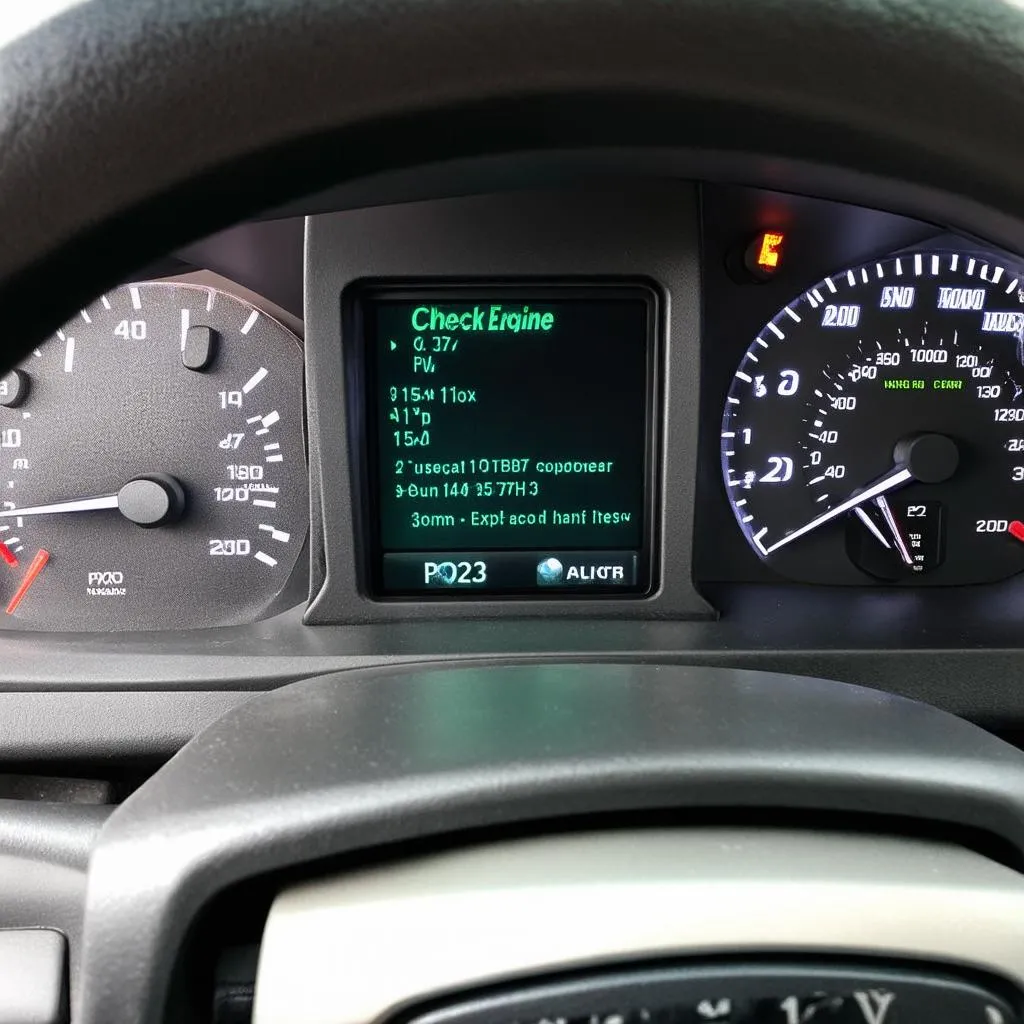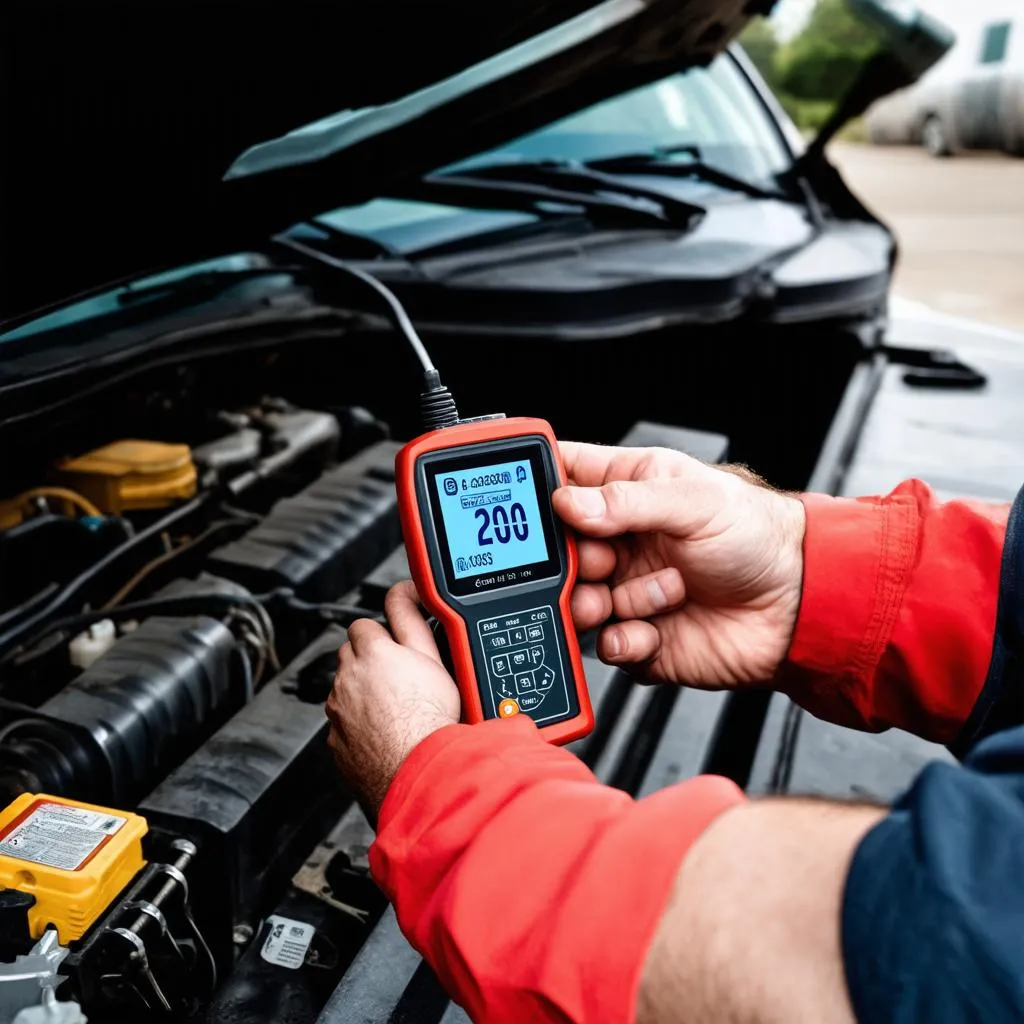Have you ever been driving down the road, enjoying the smooth ride of your 2005 Nissan Maxima, when suddenly the “Check Engine” light illuminates, leaving you with a sense of unease? This can be a frustrating experience, especially when you don’t know what’s causing the problem. And when you plug in your OBD2 scanner, it throws you a code – P0223.
Now, this code isn’t just a random string of numbers; it’s a message from your car, telling you something isn’t quite right. It’s a cryptic message, like a secret code, but decoding it can help you understand what’s going on with your beloved Maxima.
Understanding the Code P0223
The OBD code P0223 signifies a problem with the throttle position sensor (TPS) circuit. This sensor plays a crucial role in your car’s performance, as it monitors the position of your throttle and relays this information to the engine control unit (ECU). The ECU then adjusts the fuel and air mixture, ensuring smooth and efficient engine operation.
How Does a Throttle Position Sensor Work?
Think of the TPS as a “language translator” between your foot and your car’s engine. It’s a small, but vital component that sits on the throttle body. When you press the accelerator pedal, the throttle opens, and the TPS senses the change in position. This signal is transmitted to the ECU, telling it how much fuel to inject. If the TPS malfunctions, the ECU receives inaccurate information, resulting in erratic engine behavior, poor fuel economy, and a host of other problems.
What Happens When the Throttle Position Sensor Fails?
A failing TPS can manifest in a multitude of ways, some more subtle than others. Imagine your car as a well-oiled machine, where each part works in harmony. The TPS is like the conductor, ensuring the symphony of parts plays in perfect tune. When the conductor becomes unreliable, the music falls apart, and the engine performance suffers.
Common Symptoms of a Faulty TPS:
- Check Engine Light: The most common symptom is a lit “Check Engine” light accompanied by the P0223 code.
- Hesitation or Stalling: The engine may hesitate or stumble during acceleration, as the ECU struggles to interpret the wrong signals from the TPS.
- Rough Idle: The engine may idle erratically or stall, particularly at low RPMs.
- Poor Fuel Economy: The incorrect fuel mixture can lead to reduced fuel efficiency.
- Engine Misfire: The engine may misfire, resulting in a rough and jerky ride.
- Reduced Power: The engine may feel sluggish, lacking the usual power.
Troubleshooting a P0223 Code:
Before diving into repairs, it’s always best to start with a thorough diagnosis:
- Inspect the TPS: Check for any visible damage or loose connections.
- Perform a Resistance Test: Use a multimeter to measure the resistance of the TPS. Most TPS have a specific resistance range, depending on the throttle position.
- Check for Electrical Problems: Inspect the wiring for any breaks, shorts, or corrosion.
- Use a Diagnostic Scanner: Utilize a reliable OBD2 scanner to access the ECU and gather more information about the code, including specific details about the malfunction.
Repairing a Faulty Throttle Position Sensor:
Once you’ve identified the cause, the next step is to address the problem. This might involve:
- Replacing the TPS: If the sensor is damaged or faulty, replacing it is the most common solution.
- Fixing Electrical Problems: Repairing any wiring issues, such as broken or corroded wires, can resolve the issue.
- Cleaning the TPS: Sometimes a buildup of carbon or dirt on the TPS can hinder its function. Cleaning the sensor might resolve the problem. However, this should only be attempted by experienced mechanics or technicians.
- Resetting the ECU: After making any repairs, resetting the ECU can ensure proper communication between the TPS and the ECU.
Additional Considerations:
- Age and Mileage: A faulty TPS is more common in older vehicles with high mileage.
- Environmental Factors: Exposure to extreme temperatures, moisture, or harsh conditions can degrade the TPS and contribute to its failure.
- Quality of Parts: Using genuine OEM or high-quality aftermarket parts can ensure the longevity and proper functioning of the TPS.
A Word on Feng Shui
Some people believe in the power of feng shui, the ancient Chinese practice of creating harmonious environments. They might suggest that certain aspects of the car’s energy, including the flow of energy in the electrical system, can contribute to malfunctions. While there’s no scientific evidence to support this, it’s interesting to consider how the principles of balance and harmony could be applied to car maintenance.
FAQs about 2005 Nissan Maxima OBD Code P0223:
Q: Can I drive my car with a P0223 code?
A: While you might be able to drive your car with this code, it’s not recommended for extended periods. The faulty TPS can affect engine performance, fuel economy, and overall reliability. It’s best to address the issue promptly to avoid further damage or potential safety hazards.
Q: How much does it cost to repair a P0223 code?
A: The cost of repairs can vary depending on the severity of the issue and the labor costs in your area. Replacing a TPS typically ranges from $50 to $200 for the part, and labor costs can add another $50 to $150.
Q: Can I reset the P0223 code myself?
A: You can reset the code using an OBD2 scanner, but this will only temporarily clear the warning light. If the underlying issue is not addressed, the code will likely reappear.
Q: Can a bad battery cause a P0223 code?
A: While a weak or dying battery can cause various electrical problems, it’s unlikely to directly lead to a P0223 code. However, it’s always a good idea to ensure your battery is in good condition to avoid further issues.
Q: Is a P0223 code a serious problem?
A: While it’s not a catastrophic issue, a faulty TPS can lead to reduced performance and fuel economy. It’s best to have it repaired as soon as possible to prevent further complications.
Other Articles You Might Find Interesting:
- Nissan Maxima Common Problems and How to Fix Them:
- OBD Code Glossary:
- How to Use a Diagnostic Scanner:
Get in Touch!
If you’re experiencing a P0223 code and need help diagnosing or repairing your 2005 Nissan Maxima, feel free to contact us at +84767531508. Our team of expert automotive technicians is available 24/7 to assist you.
 Nissan Maxima OBD Code P0223
Nissan Maxima OBD Code P0223
 Throttle Position Sensor
Throttle Position Sensor
 OBD2 Scanner
OBD2 Scanner
Remember, even the most complex problems can be solved with a little knowledge and a willingness to learn. Happy driving!